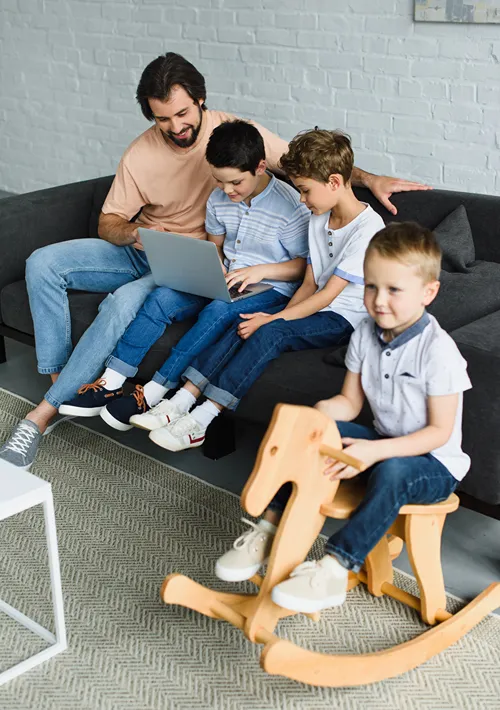Emotional balance, financial stability, social support, and access to resources all contribute to the way a person feels and functions. When practical support is part of the picture, it helps keep everything connected and manageable.
Without this kind of support, people often find it harder to stick with health goals, even if they know what needs to be done. Support can take many forms, consisting of guidance, encouragement, accountability, or access to financial help. All of these contribute to keeping people on track and less overwhelmed by daily challenges.
Guidance in Managing Life’s Daily Challenges
Daily responsibilities can pile up quickly. People juggle work schedules, family needs, personal goals, and health concerns, often at the same time. Responsibilities can make it hard to keep wellness a priority. When someone is left to manage it all alone, stress often takes over, and health is one of the first things to be neglected. Guidance can help organize priorities, create realistic steps, and reduce the pressure of trying to manage everything without direction.
Social workers play a valuable role in offering this kind of guidance. They connect people with resources, whether that means affordable healthcare services, housing programs, or community workshops. They also provide counseling and problem-solving strategies that make daily challenges easier to handle. Choosing the right kind of support helps people move forward with confidence, instead of feeling stuck in a cycle of stress. Social workers are stepping into more areas than before, supporting individuals in schools, hospitals, workplaces, and community centers. This expansion highlights how important their work is for keeping people connected to the support they need.
For social workers themselves, this growth brings opportunities. As responsibilities widen, there’s a stronger demand for advanced knowledge and leadership skills. Higher education provides the foundation to take on such challenges, opening the door to specialized roles and career advancement. Programs designed to fit modern schedules, such as accelerated MSW programs, allow professionals to gain advanced qualifications more quickly. They make it possible to continue serving communities while also building skills that prepare them for long-term impact in a rapidly changing field.
Encouragement In Building Healthier Routines
Many people know the basics, like exercise, good sleep, and balanced meals, but struggle to stay consistent without motivation. Practical support from friends, family, or professionals makes it more realistic to turn those goals into habits. Encouragement also gives people a reason to keep going when progress feels slow.
This type of support might come through regular check-ins, group activities, or community-based programs. For example, walking groups, wellness classes, or even digital reminders can help keep routines active.
Financial Guidance Connected to Health Needs
Money often determines how health decisions are made. Costs related to doctor visits, prescriptions, therapy sessions, and healthy food can all add up quickly. Without clear financial guidance, people may avoid medical care, delay important treatments, or choose less healthy options because they are cheaper in the moment. As such, this creates a cycle where financial stress directly harms physical and emotional well-being.
Practical financial guidance helps break that cycle. Support can include advice on budgeting for healthcare, information about assistance programs, or connections to local organizations that lower costs for families.

Accountability For Wellness Goals
Accountability gives structure to health goals. When someone knows that another person will check in, track progress, or celebrate milestones with them, it is easier to stay committed. Goals that might otherwise fade away become more concrete when accountability is part of the process. It changes health from being a private struggle into something supported.
This kind of support can come from wellness coaches, peer groups, or even digital platforms that track progress and send reminders. Having accountability keeps people motivated through setbacks and reinforces the importance of consistency.
Support Networks Reducing Emotional Strain
People dealing with isolation, family pressures, or work stress may struggle to maintain routines that support wellness. Having a support network offers relief by providing reassurance and connection. It lightens the emotional load, so health does not feel like another heavy responsibility.
Support networks can include close family, friends, community groups, or professional services. Their role is to listen, encourage, and offer practical help when needed. With that kind of support, individuals feel more secure and motivated to keep up with their health commitments.
Practical Help During Medical Appointments
Medical appointments can be stressful, especially when complicated information is given. Having practical support during visits helps people feel less overwhelmed. Someone who goes along to take notes, ask questions, or translate instructions can make the process smoother.
This type of help increases confidence in following through with treatments. It also makes patients feel less alone in their care. Practical support during appointments helps bridge gaps between medical advice and daily action.
Stress Relief Through Tangible Assistance
Stress often comes from juggling daily tasks while trying to focus on health. Tangible help, such as childcare, transportation, or help with groceries, eases this pressure. When those responsibilities are lighter, people can direct more attention to their health.
Tangible assistance also helps people avoid burnout. Small but consistent support makes it possible to balance life demands without sacrificing wellness. Stress is reduced, and the focus on recovery or preventive care becomes stronger.
Support For Families Managing Health Changes
When one person’s health changes, families often feel the impact. Adjusting routines, responsibilities, and emotional expectations can be challenging. Without support, this adjustment may create tension and added stress.
Practical guidance helps families adapt more smoothly. It can include education on how to provide care, strategies for communication, and ways to share responsibilities fairly.
Encouragement To Maintain Preventive Care
Preventive care is often overlooked, especially when life feels busy. Practical encouragement, like reminders for checkups or screenings, helps people stay on track. Without encouragement, preventive care often becomes a low priority.
Having someone support preventive steps helps keep them in focus. In turn, this reduces the risk of larger health problems. Encouragement builds habits that protect both short-term and long-term wellness.
Connection To Local Wellness Opportunities
Wellness often depends on access to resources in the community. Local classes, support groups, and workshops give people more options to strengthen their health. Practical support helps individuals find and connect with these opportunities.
Whether it’s a fitness group, a nutrition workshop, or a mental health service, community resources create valuable connections. Practical guidance that points people toward these options helps them feel included and supported.
When people feel supported in daily challenges, financial needs, or family adjustments, they are more likely to build routines that last. Practical support helps attain balanced living, where emotional and physical well-being can grow together.









